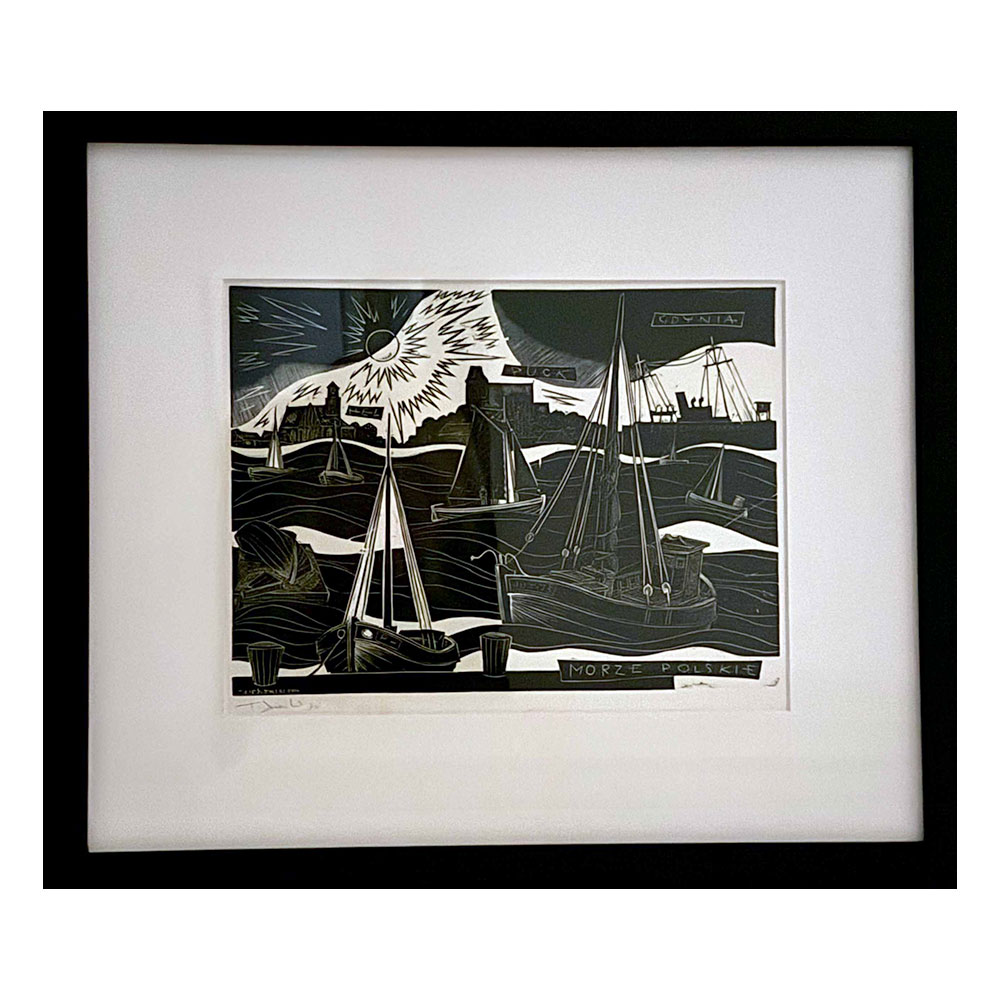Additional information
| Weight | 2 lbs |
|---|---|
| Dimensions | 16 × 13.75 × 1 in |
Tadeusz Cieślewski Jr.
Port in Puck | Port w Pucku, woodcut | drzeworyt, 1933 (copy) – 16 X 13 3/4
Auction Ended
Item condition: New
| Weight | 2 lbs |
|---|---|
| Dimensions | 16 × 13.75 × 1 in |
Auction has finished
Auction failed because there were no bids| May 1, 2024 12:00 am | Auction started | ||
Private VIP Tour
Embark on an exclusive journey through the rich tapestry of Polish heritage with our private VIP tour at the Polish Museum of America. Led by our knowledgeable guides, this personalized experience offers unparalleled access to the museum’s diverse collections, allowing you to uncover hidden treasures and delve deep into Polish history, art, and culture. From captivating exhibitions showcasing centuries-old artifacts to immersive displays highlighting the vibrant traditions of Polish communities around the world, each stop on the tour offers a glimpse into the soul of Poland. Whether you’re tracing your family roots, exploring Polish-American contributions, or simply indulging your curiosity, our VIP tour promises an unforgettable exploration of the past, present, and future of Polish identity.
Morning
Leon Granacki’s favorite outdoor scenes were of rippling Minnesota streams, towering pine trees, and flocks of Canadian geese. His watercolors were exhibited widely and sold at local art fairs from the 1970s through 1990.
An Artist Goes to War: Leon Granacki in the South Pacific WWII
Like so many others who served in World War II, Leon Granacki was an ordinary guy from a working-class immigrant family drafted into the US Army and thrust into the horrors of war in the South Pacific. But through sheer luck and pluck, he leveraged his art talents to survive and thrive, catapulting himself from private infantryman to Master Sergeant and mapmaker for General MacArthur in the Americal Division’s Intelligence section. Inspired by the Southern Cross as his troop transport crossed the equator, he designed the Americal Division patch for the Army’s only named division, created in New Caledonia. Overseas for three-and-a-half years without any stateside furlough, he labored over maps of enemy positions in a primitive tent in the steamy, mosquito-infested jungles of Guadalcanal and Bougainville.
In An Artist Goes to War, author Victoria Ann Granacki paints a portrait of her father, Leon, through his original maps, jungle watercolors, journal illustrations, scrapbook photos, and letters home to “Dear Gang”—his extended Polish American family crowded together in a Chicago “six-flat” apartment building. Despite only slyly alluding to awful conditions to evade the censors’ scissors, his indomitable optimism always comes through. The Polish-language letters directed to his beloved parents are filled with childlike tenderness as he tries to reassure them he’ll be safe. His plaintive longings for family, holidays home, fishing, and a woman to love are poignant reminders of the personal effects of war on reluctant soldiers.
Morning
Leon Granacki’s favorite outdoor scenes were of rippling Minnesota streams, towering pine trees, and flocks of Canadian geese. His watercolors were exhibited widely and sold at local art fairs from the 1970s through 1990.
An Artist Goes to War: Leon Granacki in the South Pacific WWII
Like so many others who served in World War II, Leon Granacki was an ordinary guy from a working-class immigrant family drafted into the US Army and thrust into the horrors of war in the South Pacific. But through sheer luck and pluck, he leveraged his art talents to survive and thrive, catapulting himself from private infantryman to Master Sergeant and mapmaker for General MacArthur in the Americal Division’s Intelligence section. Inspired by the Southern Cross as his troop transport crossed the equator, he designed the Americal Division patch for the Army’s only named division, created in New Caledonia. Overseas for three-and-a-half years without any stateside furlough, he labored over maps of enemy positions in a primitive tent in the steamy, mosquito-infested jungles of Guadalcanal and Bougainville.
In An Artist Goes to War, author Victoria Ann Granacki paints a portrait of her father, Leon, through his original maps, jungle watercolors, journal illustrations, scrapbook photos, and letters home to “Dear Gang”—his extended Polish American family crowded together in a Chicago “six-flat” apartment building. Despite only slyly alluding to awful conditions to evade the censors’ scissors, his indomitable optimism always comes through. The Polish-language letters directed to his beloved parents are filled with childlike tenderness as he tries to reassure them he’ll be safe. His plaintive longings for family, holidays home, fishing, and a woman to love are poignant reminders of the personal effects of war on reluctant soldiers.
